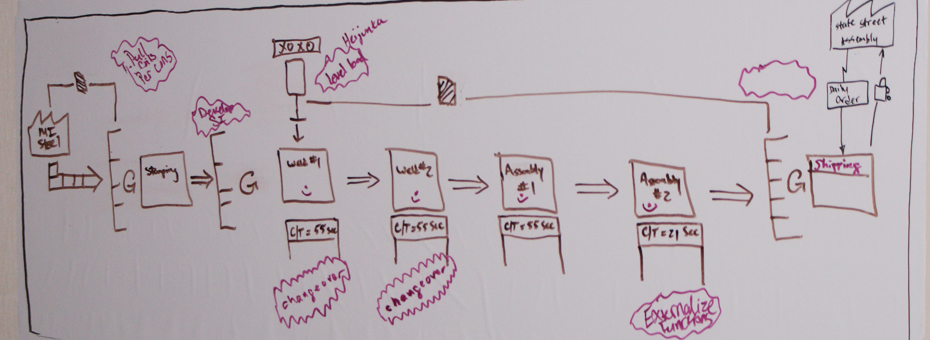Learning to See, the workbook that introduced the concept of value-stream mapping to the English-speaking world, was first published by LEI in 1999. But despite the staying power of this popular and valuable lean tool, people fail to get its maximum benefit according to Judy Worth, LEI faculty member and facilitator of value-stream improvement efforts in healthcare, government, and manufacturing organizations (Worth is also the instructional designer for the Mapping to See Training Kit and co-author of Perfecting Patient Journeys).
I spoke more with Judy on this topic at the Lean Transformation Summit earlier this month (watch the full video below). “I’m reluctant to say maps are nothing, but there’s a difference between maps and mapping,” she says, paraphrasing American President and General Dwight Eisenhower’s insight that battle plans meant nothing, but planning for battle was indispensable. “An awful lot of the benefit that comes out of value-stream maps comes from the process of mapping with other people.”
The problem is that many companies don’t follow the mapping process properly. Typical mistakes she sees are not having the right people involved or not generating a plan for getting from a current state to a leaner future state. “There’s a lot more mileage to be gotten out of mapping than people typically get.”
In the video, Worth shares these tips:
- Ask, who must be in the same room for mapping to be effective?
- How will you make sure the mapping exercise has a meaningful business impact on the targeted value stream?
- Senior management’s mapping role
- Consider what to do before the team begins mapping
- Consider what must be in the mapping “charter” or value proposition
Learning to See Using
Value-Stream Mapping
Develop a blueprint of improvements that will achieve your organization’s strategic objectives.






